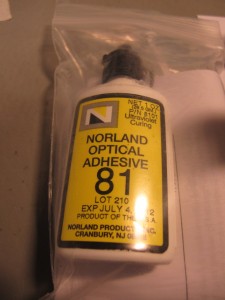
We use Norland Optical Adhesive (NOA-81) for gluing bits and pieces together in the lab. The glue cures in UV-light. So far we've used a fluorescent solarium lamp for this, but we broke one of the two remaining lamps and can't seem to source new ones.
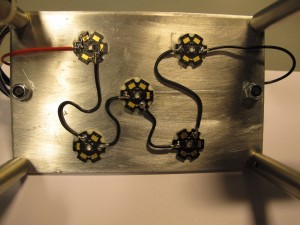
So I decided to try an LED solution. These are LEDEngin LZ1-10U600 LEDs with a center wavelength of 365 nm, 28 euros each from Mouser. They are glued to an aluminium plate using a heat-conducting glue, Loctite Output 384:
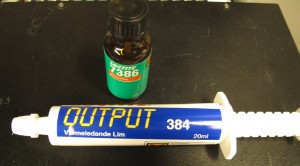
For simplicity I used a LighTech 18 W 700 mA constant-current powersupply that runs directly off AC mains. The powersupply has a maximum output voltage of 24 V which is enough to drive the five UV-LEDs in series (the UV-LED has a voltage-drop of 4.1 V)
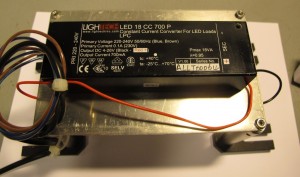
Here's how the lamp looks like:
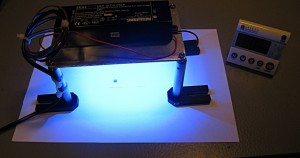
Most of the blue in this picture is fluorescence from the white paper underneath the lamp. A quick test shows that the NOA-81 glue cures very quickly indeed (seconds) with this lamp. Much faster than with the old fluorescent lamp (minutes) anyway. This kind of lamp may be useful for PCB-making also? I didn't keep the lamp on for very long yet, so I don't know how adequate the alu-plate is as a heat-sink.
Warning: The UV-light from these LEDs may be more or less harmful for your eyes and/or skin. Don't try this at home unless you know what you are doing!
I wonder if that would work for retrobrighting 🙂